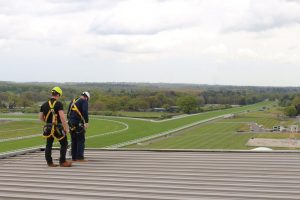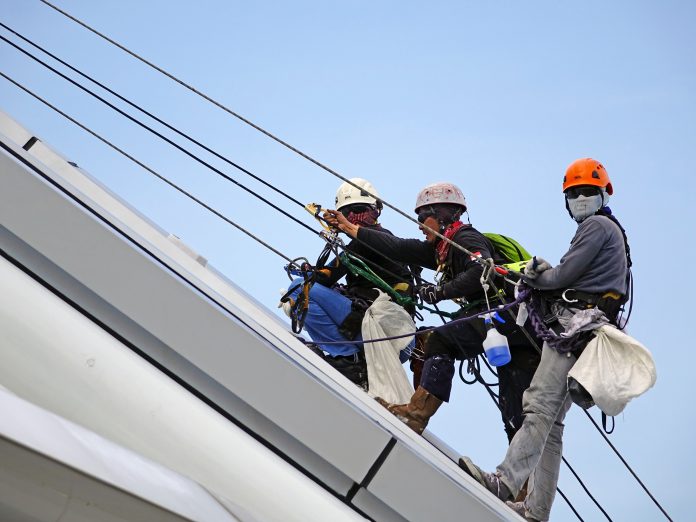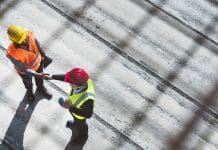Without government intervention falls from height will continue to kill, warns Ken Diable, managing director of work at height and fall protection safety specialist Heightsafe
It is an unforgivable tragedy that construction workers are suffering death and serious injuries as a result of falls from height that could, with proactive safety planning, be avoided.
From 2013-18, falls from height accounted for the majority of fatal injuries to workers – at an average of 37 deaths every year. In construction, 47% of deaths, and 33% of injuries were as a result of a fall from height.
While it may be easy to apportion blame on construction managers for a lack of proactive safety planning, this would be unfair. Individuals play a key role in mitigating risks, but there are wider cultural and regulatory issues that need to be addressed in order to stop avoidable deaths as a result of working at height.
Now is the ideal time to proactively address these issues. In February, the All-Party Parliamentary Group (APPG) on Working at Height released its report, Staying Alive, and the Health & Safety Executive (HSE) is due to publish its latest 2019-20 Business Plan this quarter. Will its focus be on the biggest killer of workers in the UK?
Regulation and reward for proactive planning
Unfortunately, in my experience it often takes a near-miss for organisations to invest in work at height equipment. As the APPG identified in its report, alongside a culture of complacency, some main contractors are also cost-cutting on safety equipment to undercut competitors and increase profit margins.
That is why we propose making work at height equipment a legal requirement on all new buildings and redevelopment projects – with a minimum standard set in Building Regulations.
Ideally, it shouldn’t take regulation to convince construction leaders that safety equipment is vital. However, with a consistent flow of HSE prosecutions related to a lack of working at height equipment it seems that, unfortunately, the stick is more effective than the carrot.
Any such regulation will, of course, mean additional cost for overall project budgets. To mitigate this, one option is tax relief for investing in work at height equipment. Similar to the Land Remediation Relief currently available in the asbestos industry, this new regulation would encourage a proactive approach to safety.
 Open and accessible reporting
Open and accessible reporting
Humans are naturally competitive and are often most driven to improve by judging themselves against peers. There’s an opportunity here to put that instinct to work.
Firstly, RIDDOR (Reporting of Injuries, Diseases & Dangerous Occurrences Regulations) statistics should be easily accessible online for businesses in high-risk industries such as construction, alongside a certification scheme, providing proof of an organisation’s accident statistics. This would provide organisations with an easy way to benchmark themselves against competitors, and provide incentives to improve.
Similarly, the HSE could continually monitor and report on the health and safety performance of contractors in the same high-risk industries. Scoring against set metrics would again encourage a proactive approach to working at height safely.
It’s also important to note that customers have a role to play in cultural change. By making safety benchmarking easily accessible, it can become a key consideration in the choice of contractors.
Proactive approach to basics can stop avoidable deaths
Whether or not we see stricter legislation around working at height, getting the basics right is vital. Remember, this isn’t really about reporting or costs. It’s about saving lives and preventing life-changing injuries.
So let’s recap the basics when planning for work at height:
- Training – The Work at Height Regulations 2005 state that as an employer or dutyholder, you are required to ensure that all employees have access to work at height equipment that reflects the requirements and regulations, including training in the use of equipment.
- Fall Protection Systems – Current health and safety legislation dictates that Fall Protection Systems should be in place when employees or contractors carry out work at height (2m or higher).
- Safe equipment – Personal Protective Equipment (PPE) is a vital part of protecting against the risks posed while working at height. This includes items such as safety harnesses, lanyards and karabiners – legally required when using some Personal Fall Protection Systems, such as safety lines and walkways. As an employer, it is your duty to ensure that employees are fully trained when it comes to selecting the correct PPE for the job.
- Inspection, testing and compliance – The PUWER Regulations 1998 state that regular maintenance and testing of work at height equipment and PPE is required to remain compliant. If your systems are not visibly tagged and in compliance, it may not only invalidate your insurance but could also lead to prosecution, should an employee, contractor or even trespassers suffer injuries.
More advice on safe working at height is available on the Heightsafe blog.
 Ken Diable
Ken Diable
Managing director
Heightsafe
Tel: +44 (0)203 819 7199


















Slips, trips, and falls can happen anywhere, at any time and in any workplace. It is shocking to see that In construction, 47% of deaths, and 33% of injuries were as a result of a fall from height. What appealed to me the most in your blog is you say a proactive approach to basics is about saving lives and preventing life-changing injuries but not reporting or costs. Employers need to ensure that the risk assessment has included a careful examination of what harm could be caused from working at height with a view to taking the effective steps to reduce the likelihood of this harm occurring, by carrying it out in a safe manner using work equipment that is appropriate to the task and the level of risk.